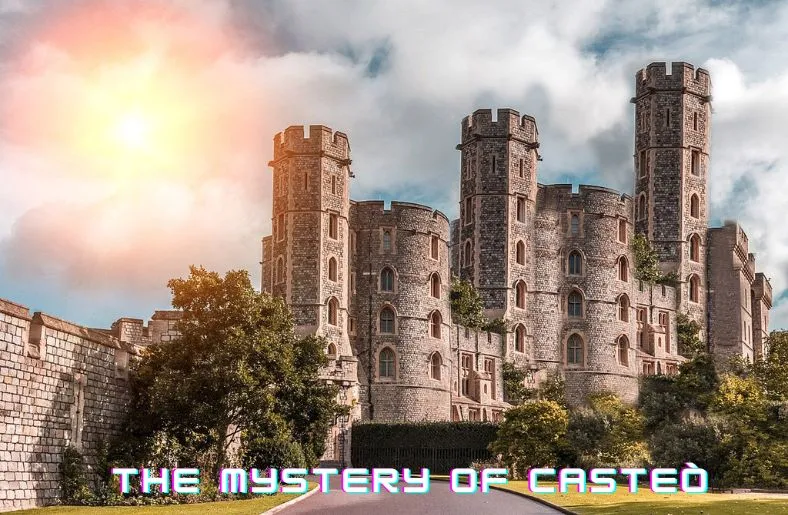Caste architecture encapsulates the grandeur and complexity of medieval landscapes. Delve into the very essence of these historical fortresses, their social importance, and their continuing influence today. This comprehensive exploration is a must-read for history buffs, travelers, and educators alike, shedding new light on an enduring legacy of the past.
In this extensive post, we will traverse the ageless wisdom and enigma of caste architecture, from its origins to the very fabric of society it shaped and the lasting impact it still holds. This is not just a historical inquiry, but a poignant reflection on the cultural threads that bind our past and present.
Understanding Casteò
Imagine yourself standing on the ramparts of a grand fortress, gazing out onto the rolling hills and plains beyond. In that moment, the earthy scent of the ancient stones beneath your feet, the play of light on the imposing walls, and the whispers of history all converge, transforming you into a witness to centuries past. This is the essence of caste architecture, an indelible marker of time, power, and the human spirit against an unyielding backdrop of history.
Casteò, as we term it today, was not merely a structure or a building technique; it was a physical and social manifestation of power and protection. Casteò are the lone sentinels of battles fought and lands governed, speaking volumes about the societies that shaped them. This post is a foray into the heart of these fortresses, aiming to enrich our understanding of their diverse roles, from symbolizing hierarchies to fostering communities, and perhaps, to inspiring our contemporary world.
What’s the Term Casteò
The term ‘casteò’ has a multifaceted approach, incorporating architectural, social, and cultural elements unique to medieval societies. It isn’t limited to a singular definition but resonates with the essence of a bygone era.
The Historical Context of Casteò
Caste architecture is deeply intertwined with the political and social landscapes of the medieval period. From the Dark Ages to the Renaissance, casteò remained pivotal in asserting control over territories and in the projection of power.
Etymology and Origin of “Casteò”
The term ‘castle’ derives from several linguistic roots, such as the Latin word ‘castellum,’ meaning fort, or the Germanic ‘burg,’ which shares a similar connotation. It is a linguistic bridge that connects various cultures under the common umbrella of fortifications.
Casteò in Medieval Society
Medieval society was a mosaic of various classes, and casteò were not merely the homes of nobility but the administrative centers of local governance. Their strategic locations often dictated the ebb and flow of commerce and conflict.
The Role of Casteò in Feudal Hierarchies
Feudal systems often revolved around a network of castles, each serving as a node in the hierarchical structure of power. Lords and vassals negotiated their roles and responsibilities within this system, often with casteò as the backdrop to their dealings.
Architectural Significance
The architectural magnificence of casteò is a testament to the ingenuity of the craftsmen who built them. From formidable keeps to intricate masonry, each element served a purpose in the survival and sovereignty of the estate.
Casteò as Fortresses: Design and Purpose
Casteò were built with defense in mind. Their designs incorporated moats, battlements, and arrow slits, all meticulously structured to repel invaders. The high walls and the mighty gates were not mere barriers but statements of strength and inviolability.
Evolution of Casteò Architecture Over the Centuries
The design of casteò evolved alongside the changing nature of warfare and society. The motte-and-bailey castles of the early medieval age gave way to the concentric structures of the later periods, each innovation a response to new threats and tactics.
Casteò Across Different Cultures
Caste architecture is not a monolithic concept but a diverse reflection of the societies in which it was nurtured. By examining the variations in casteò across different regions, we can glean insights into the distinct cultural and historical narratives.
The European Experience
In Europe, casteò stood as tangible signs of the continents’ turbulent history. From the grandeur of Château de Chambord to the starkness of Krak des Chevaliers, each European castle has a narrative to tell, steeped in the chivalry and intrigue of its time.
Casteò in Asian History
Asian castles, such as Japan’s ‘shiro,’ or the Indian ‘qila,’ possessed their own identity and functionality. Each bore the marks of their rich histories, some even becoming the cradle of entire civilizations.
Comparative Analysis with Similar Structures Worldwide
The concept of caste is not unique to Europe or Asia. Around the world, we find analogous structures performing similar roles in societies. By drawing comparisons, we can understand both the universal and unique aspects of caste architecture.
The Social Dimensions of Casteò
Caste architecture wasn’t just about defense and administration. It was the focal point of a complex web of social interactions that defined the lives of those within and beyond its walls.
Casteò as Symbols of Power and Prestige
The erection of casteà often signified a shift in power dynamics, a conquest or consolidation. Their grandeur was a direct reflection of the wealth and status of their owners, intended to impress and intimidate in equal measure.
The Economic Impact of Building and Maintaining Casteò
Building a caste was a monumental undertaking that required vast resources and a substantial labor force. It wasn’t just a drain on the kingdom’s coffers but a catalyst for economic activity, from quarrying to provisioning.
Casteò and Their Role in Community Life
Casteò were epicenters of communal life, where markets, entertainments, and religious ceremonies took place. They fostered a sense of identity and provided security in an often uncertain world.
The Legacy of Casteò Today
Despite the decay of many casteò, their legacy endures. Today, they stand as touchstones to our shared human history, beckoning visitors to explore the stories locked within their walls.
Preservation Efforts and Challenges
Preserving casteò is a labor of love and a race against time. Efforts to maintain these structures must balance the need to conserve their integrity with the imperative to share their heritage with future generations.
Casteò as Tourist Destinations and Educational Sites
Many casteò now serve as both tourism magnets and educational hubs. They offer a window into the past, revealing the societal norms and daily lives that once teemed within their confines.
The Influence of Casteò on Modern Architecture
Caste architecture has left an indelible mark on modern building design. The soaring turrets of skyscrapers or the fortified structures of corporate campuses all hark back to the principles of security and assertion of authority that casteò exemplified.
Future Directions
Our exploration of casteà and their place in history is not a static enterprise but a dynamic one that continually evolves with new discoveries and understandings.
Research Gaps and Opportunities
There are still many unanswered questions and uncharted territories within the realm of caste architecture. Future research may expose forgotten castles or heretofore unrecognized patterns in their construction and use.
The Role of Technology in Exploring Casteò
Emerging technologies offer unprecedented ways to explore and understand caste architecture. From virtual reconstructions to remote sensing, these tools open up new vistas of inquiry and appreciation.
Conclusion
In sum, the exploration of castle architecture extends beyond mere academic interest; it is a deep dive into the very essence of human culture and societal evolution. Castles, with their imposing structures and strategic complexities, offer invaluable insights into the past, serving as sentinels of history that endured through centuries of change. They embody the aspirations, conflicts, and ingenuity of generations, linking us to a shared heritage that transcends time and geography. By studying these monumental edifices, we not only pay homage to their legacy but also enrich our understanding of the human narrative. Thus, castles remain not relics of bygone eras, but vibrant testimonies to the enduring human spirit.
FAQS
What is Castle Architecture?
Castle architecture refers to the design and construction of castles, which were fortified structures built primarily in Europe and the Middle East during the Middle Ages. These structures were symbols of power and served both defensive and administrative purposes.
Why were Castles Built?
Castles were built for protection against invaders, as a seat of power, and to control the surrounding land. They were strategic in military defense and in asserting the dominance of the nobility over the region.
How were Castles Constructed?
Castles were constructed using local materials, primarily stone and wood, employing skilled labor ranging from masons to carpenters. The construction could take several years, sometimes decades, depending on the castle’s size and complexity.
Can You Visit Castles Today?
Yes, many castles have been preserved as historical sites and are open to the public for tours. They offer a glimpse into medieval life and architecture, serving as popular tourist destinations.
How are Castles Preserved?
Castle preservation involves a range of activities, from routine maintenance to extensive restoration projects. This work is often managed by heritage organizations, which strive to maintain the structural integrity and historical authenticity of these sites.
What is the Significance of Castles in Modern Times?
Today, castles serve as a link to the past, offering insights into medieval society, culture, and architectural innovation. They continue to fascinate academicians, historians, and the general public, contributing significantly to tourism and education.





